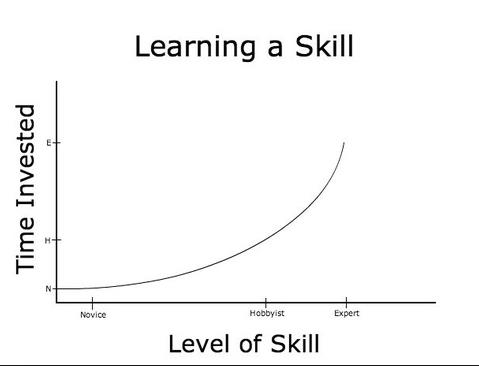Introduction
Human Resource Development is the integration of training and learning programs, career development efforts in order to enhance skills and knowledge of employees and effectiveness of an organisation. HR Department is held responsible to develop competencies of individuals through implementing planned learning activities in order to achieve growth and success in professional career. The present assignment report is based on HSBC which is one of the largest financial organisation in world which deals in multiple banking and financial services. The project covers different learning styles and theories which is helpful in improving performance of employees. Benefits and demerits of training programs along with the systematic approach plan has discussed under this report. The project also summarises the role of government in training, development and lifelong learning (Avey and et. al., 2011).
Assignment Prime is an online assignment writing service provider which caters the academic need of students.
Get Best Pricing Quotes Free Samples Email : help@assignmentprime.com Order NowTask 1
1.1 Comparing different learning styles
The management of HSBC need to focus on conducting training and learning programs for their staff members in order to develop their skills and capabilities of doing allotted work. There are different learning styles which need to adopted by the management of HSBC in order to get sufficient information about the knowledge and skills of employees working in an organisation. Such learning styles are described as below:
Kolb's Learning Styles: This style was first published in 1948 by David Kolb which implies that people need to follow only four styles of learning which is based on the combination of learning cycle. It includes four stages:
Diverging Learning Style: It includes those people who prefer to learn something new and innovative and after analysing their effectiveness, they prefer to take action. Such type of person are more intelligent and always focuses on gaining new knowledge.
Assimilating Learning Style: It includes those people which believes in logical and conceptual things thus prefer to make research in order to gain new logical learnings.
Converging Learning Style: It includes those people who prefer to work practically rather than learning theories. As they believe, doing practical work gives actual experience and knowledge (Bloom and Van Reenen, 2011).
Accommodating Learning Style: It includes those people who prefer to work according to the direction given by inner feelings. They perform with emotions thus do not believe in conducting research.
Honey and Mumford's Style: It includes four main learning styles which direct employees to gain new knowledge and experience and perform with their own direction. There are four methods of approaches which are given as below:

Illustration 1: Honey and Mumford's learning style
Text 1: Source: Learning Styles and why they matter, 2011
Activists: It includes employees who prefer to gain new skills and knowledge through performing various activities such as group discussions, puzzles etc.
Theorists: It includes those people who took interest in learning new theories through observation and experiments.
Pragmatist: It includes those people who shows their interest in doing experiments about new theories, techniques and concepts with the purpose of completing task in more effective and efficient manner (Flamholtz, 2012).
Reflectors Learning Style: It includes those people who took interest in observing and watching new and different things in order to find out their effectiveness with the purpose of implementation at workplace.
1.2 Role of learning curve and importance of transferring learning at workplace
Learning curve may be defined as the concept of learning new skills and knowledge as quickly as possible by the staff members of an organisation. It is represented in graphical form which clearly show the rate of learning something over a period of time or repeated experiences. Therefore, learning curve gives an opportunity to the management of HSBC to identify the effectiveness of training programs through understanding the relationship between learning and experience. It represents that after gaining new knowledge and experience, staff members of HSBC can able to perform more effectively with less time. Thus, it is important for management to identify the different learning of their staff members and on the basis of that, training and development programs should be conducted. Implementation of different learning styles brings beneficial outcomes to company out of which some are given as below:

Illustration 2: Learning curve
Text 2: Source: Kelly Veterans, 2016
Add Value: Learning curve helps in adding value to the performance of employees through which they are able to give maximum possible efforts in achieving desired goals and objectives (Gruman and Saks, 2011). HR manager should required to have proper knowledge about different learning styles otherwise it becomes difficult for them to enhance skills and knowledge of their staff members.
Face and Overcome Challenges: The staff members sometimes may face problems regarding dealing with people having different culture and background due to which it brings difficulties for them to provide banking services to the customers. Therefore, the management of HSBC is responsible to provide case studies and training and learning programs in order to enhance their communication and other skills so as to deal with different types of customers (Kraaijenbrink, Spender and Groen, 2010).
Optimum Utilisation of Finance: HSBC deals in offering banking and financial services to the customers thus it is important for management to utilise the funds in an optimum manner through giving bank loans and investing deposits in profitable areas so that they can earn maximum outcomes from the available resources the company have.
1.3 Contribution of learning theories and styles when planning and designing a learning event
Learning theory play a crucial role in enhancing skills and capabilities of staff members in HSBC. There are different theorists who comes with their new thoughts and ideas of improving the performance of employees. Kolb's learning, theory, Alan Mumford approach etc. are some theorists which helps in identifying the way of doing task by different staff members in different situations. Thus, learning theories and and styles gives maximum contribution in planning and designing event. Therefore, the management of HSBC should required to analyse the learning theories and styles and there after decision made regarding conducting training and development programs.
Contribution of learning styles and theories in designing training programs:
Classification of Concealed Points: Learning theories and models classified that different points which indicated the requirements of training programs in an organisation. For example, identifying the areas in which employees shows more interest in performing. This will help in providing training to them in such field in order to maximise their strengths (Lin, 2011).
Motivate Towards Right Direction: Such theory helps in giving proper guidance and motivation to staff members to work in right direction with a motive of getting profitable outcomes in near future.
Enhance Efficiency: Different learning styles and theories improves the efficiency of employees which brings efficiency in work as well.
Display Different Alternative for Getting Knowledge: Learning styles and theories help in representing the actual skills and knowledge of employees and their preference while doing task at workplace. Through this, the management should conduct training programs according to their skills and preferences.
Task 2
2.1 Requirements of training needs for staff at different level
There are generally three management level of an organisation which perform different roles and responsibilities in achieving desired goals and objectives. Such level includes Top, middle and lower level who take and gives support each others regarding completion of business activities in more effective and efficient manner. HSBC should required to conduct training programs for each level of management in order to improve their skills and capabilities of performing delegated roles and responsibilities.
The needs of training at three level of HSBC given as below:
At Superior Level: At this level, the training programs shall be conducted for the managers of different departments in order to improve their decision-making skills and other capabilities through which they can able to give proper guidance and direction to their mid-level and Junior level. Top authority of HSBC includes bank branch manager, financial planning director, Auto Re-marketing manager etc. who carries different roles and responsibilities in order to achieve desire goals and objectives. Some managers are more experienced where some are new to HSBC. Therefore, the senior managers should required to give support to less-experienced manager related with the situation that may arises in near future. Through providing sufficient training programs will help them in making an effective policies and plans regarding the granting loans and accepting deposits.
At Mid Level: At this level, top authorities or senior managers of HSBC are liable to conduct training programs for their mid-level position employees such as commercial loan manager, commercial credit analyst, senior business development executive etc. after identifying their needs and performance. As they are liable to execute plans and policies formulated by Senior level manager , it is important for HBSC to have skilled and knowledgable employees who successfully complete allotted task in an effective and efficient manner. For this, training and learning programs shall be organised in order to build confidence among them while dealing with complex situations.
At Junior Level: Cash management officer, taxation executive, loan executive etc. are included under this level who are performed daily basis operation for the bank. They are the representatives of top and middle level management who are responsible to receive orders and instructions from top authorities and perform accordingly. Therefore, training programs shall required to be conducted by top level managers after find out the needs of junior level employees with a motive of increasing their skills and capabilities of performing daily business operations of Bank (Martin, McNally and Kay, 2013).
2.2 Advantages and disadvantage of training methods used in HSBC
There are several methods of training from which best method should required to be selected by the management of HSBC after forecasting its effectiveness. HSBC need to motivate their staff members to perform their delegated roles and responsibilities in an expected manner and it can possible only when suitable training methods has been conducted for them on regular basis. As there are different methods of training which has their own merits and demerits thus need to be carefully analysed by management before conducting. Here are the some advantages and disadvantages of different training methods:
Class Room or Lecture Method: This type of training is provided in the class room where the trainer gives lecture to the employees. This type of training can be provide through using projector and power-point presentation which contain whole information about the content of training.
Advantages: Adopting such type of training, HSBC can able to provide training content to large number of trainees at a time which reduces cost and consumes less time as well.
Disadvantages: Such type of training is not suitable for the practical work as there is not opportunities are provided for lab demonstrations. The trainees also took less interest in attending such training programs as they are bored to listen lengthy lectures from instructors.
Practical Training Methods: This type of training providing an opportunity to trainees to learn through practically which increases the willingness of trainees to get involves in training programs (McMichael, 2011).
Advantages: The trainees show more interest in participating in such training programs where they get an opportunity to learn things through practically. Thus, it ensures in increasing skills and knowledge of employees.
Disadvantage: Such type of training requires decision making thus not applied to management level employees.
Case Study Method: In this training method, the trainers provide an opportunity to trainees to deal with real life situations and asked them to solve with the help of their own skills and knowledge. Such method I useful for trainees to work practically on the basis of assumptions.
Advantage: It is useful method of training which can be applied to the management level where decision making is required. Such type of training is cost effective as well.
Disadvantage: It is not much effective to the subordinate level as this type of training could not be apply it to working fields.
2.3 Systematic approach to plan training and development for a training event
Training is conducted with an objective of enhancing the skills and knowledge of employees thus should be designed and planned by HRD expert in such an effective way that will help in getting profitable outcome for company in near future (Mitchell, 2013). HSBC should required to adopt following approach while conducting training event:
Aim of the Organisation: The first step before organising training event is to identify the main aim of an organisation and thus design training strategy in such a way that will help in achieving aim within shorter period of time.
Identification of Training Needs: The HRD of an organisation are liable to identify the training needs of training through collecting feedbacks and evaluating performance of each employees.
Designing Training Strategy: HRD experts should required to design training events in such an effective way that covers all aspects and sectors of an organisation. For example, if HSBC wants to provide training to both management and operational level employees then they must required to adopt mixed training method (Vörösmarty and et. al., 2010).
Implementation of Training Method: Thus after passing all above steps, HRD experts of HSBC took final decision of implementing training event.
Task 3
3.1 Preparing on evaluation of the induction training programme highlighting evaluation technique
Evaluation of training can be possible through following stages:
Setting Objectives: At first, objectives of conducting training event are required to be identified on the basis of which training event should be designed.
Monitoring and Recording Actual Outcome: HRD expert should required to conduct survey in order to collect actual outcomes received from training event.
Comparing Actual With Desired Outcome: After identifying the actual outcomes, the next step is to compare actual outcomes with expected outcomes in order to determine whether induction program brings profitable result to company or not.
Correction: HRD expert should take corrective actions and measures if any deviation found in the actual and desired outcome to company.
Monitoring the Progress: Once the deviations are identified and corrected, HRD experts need to monitored in order to find laws existing (Werner and DeSimone, 2011).
3.2 Carrying out an evaluation of a training event
Training programs is conducted with a motive of increasing the effectiveness and efficiency of employees as well as performance of an organisation. Evaluation of training event can be done through using following techniques:
Reaction and Planned Action: As the behaviour of employees are changed due to training programmes which need to be analysed by HRD expert in order to applied such attitude while preparing plan for bank (Heathfield, 2016).
Level of Learning: It is important for management to measure the skills and knowledge of employees acquired by employees during training events. It will be thereafter using in performing several banking functions.
Application on the Job: HRD manager should required to identify the number of employees who are applied for the job in an organisation after receiving training. If maximum number of employees are applies then it will bring profitable outcome to company.
Business Result: The HRD experts should required to analyse the effectiveness of training programs to make sure that it will bring profitable outcome to company.
Return on Investment: This is the way of measuring training method through using monetary value of company. Conducting training programmes help in increasing profits and ensures company to provide maximum return on investment made on training programs.
3.3 Reviewing the success of the evaluation methods used
For the purpose of evaluation, HSBC need to first collect data from trainers and accordingly measure in order to find out the effectiveness of training programs. Adopting various training methods provided several benefits to company which are follows:
Improvement in the attitude, interest and behaviour of employees clearly shows that the training event bring profitable result to company (Kelly Veterans, M., 2016).
This methods also helps in analysing the contribution of training event on the basis of monetary value. This method is helpful in analysing the event correctly and achieve good outcomes.
Training methods also described on the job performance of the training. It will help in determining the outcomes received by company after training programs. Through this, company can easily achieve desired goals and objectives.
Task 4
4.1 Explaining the role of government in training and development in UK including lifelong learning
The government of a country play an important role in the development of training including lifelong learning as stated below:
Generating Public Norm: UK government are mainly focuses on maintaining culture of employees and employers. Thus, public norms help company to develop the staff members at workplace.
HR Policies for All: UK government also develop HR policies for the betterment of employees with a motive of enhancing their performance at workplace.
Allocation of Fund: Government focus on preparing budget and allocating for the development of human resource of both private and public sector.
Creating Favourable Work Environment: The government of UK set different laws and legislations with a motive of maintaining good environment at workplace.
4.2 Explaining how the development of the competency movement has impacted on the public and private sectors
The development of competency has made huge impact on both public and private sectors. The employees having high competencies will give profitable result to company. The employees should b more strategic during performing in working environment. This will enhances the efficient and effectiveness of workers both in public and private sectors of the company (Learning Styles and why they matter, 2011).
The competency movement also helpful for public sector to get skilled workers with the help of which they can achieve their desired goals.
The competency movement in UK also give huge contribution to the banking sector as t help banks such as HSBC to get skilled employees which directly improves the performance of the bank.
4.3 Contemporary training initiatives introduced by UK government
UK government should also give various efforts in providing different training programs to the employees of both private and public sectors.
British council in UK is one of the largest international organisation which provides language training in order to improve language proficiency. Without having knowledge of multiple languages the employees of HSBC should not able to deal with their customers having different cultures and backgrounds.
Another government body in UK is the Learning and Skills council which provides training to the human resource in order to enhance skills and knowledge of employees of the country. Thus the organisation such as HSBC can able to recruit skilled people.
Conclusion
It has been concluded from the above project report that Human resource department play an important role through providing maximum contribution in the development of employees as well as overall performance of an organisation. Training and development programs shall be conducted to improve the skills and knowledge of employees but before that identification of need and present capabilities of employees should be required. It can be done through adopting various theories and models. Government also play an important role in development of employees through giving various contemporary training initiatives.
References
- Avey, J. B and et. al., 2011. Metaanalysis of the impact of positive psychological capital on employee attitudes, behaviors, and performance. Human resource development quarterly. 22(2). pp.127-152.
- Bloom, N. and Van Reenen, J., 2011. Human resource management and productivity. Handbook of labor economics. 4. pp.1697-1767.
- Flamholtz, E. G., 2012. Human resource accountingJiang, K and et. al., 2012. How does human resource management influence organizational outcomes? A meta-analytic investigation of mediating mechanisms. Academy of management Journal. 55(6). pp.1264-1294.
- Gruman, J. A. and Saks, A. M., 2011. Performance management and employee engagement. Human Resource Management Review. 21(2). pp.123-136.














